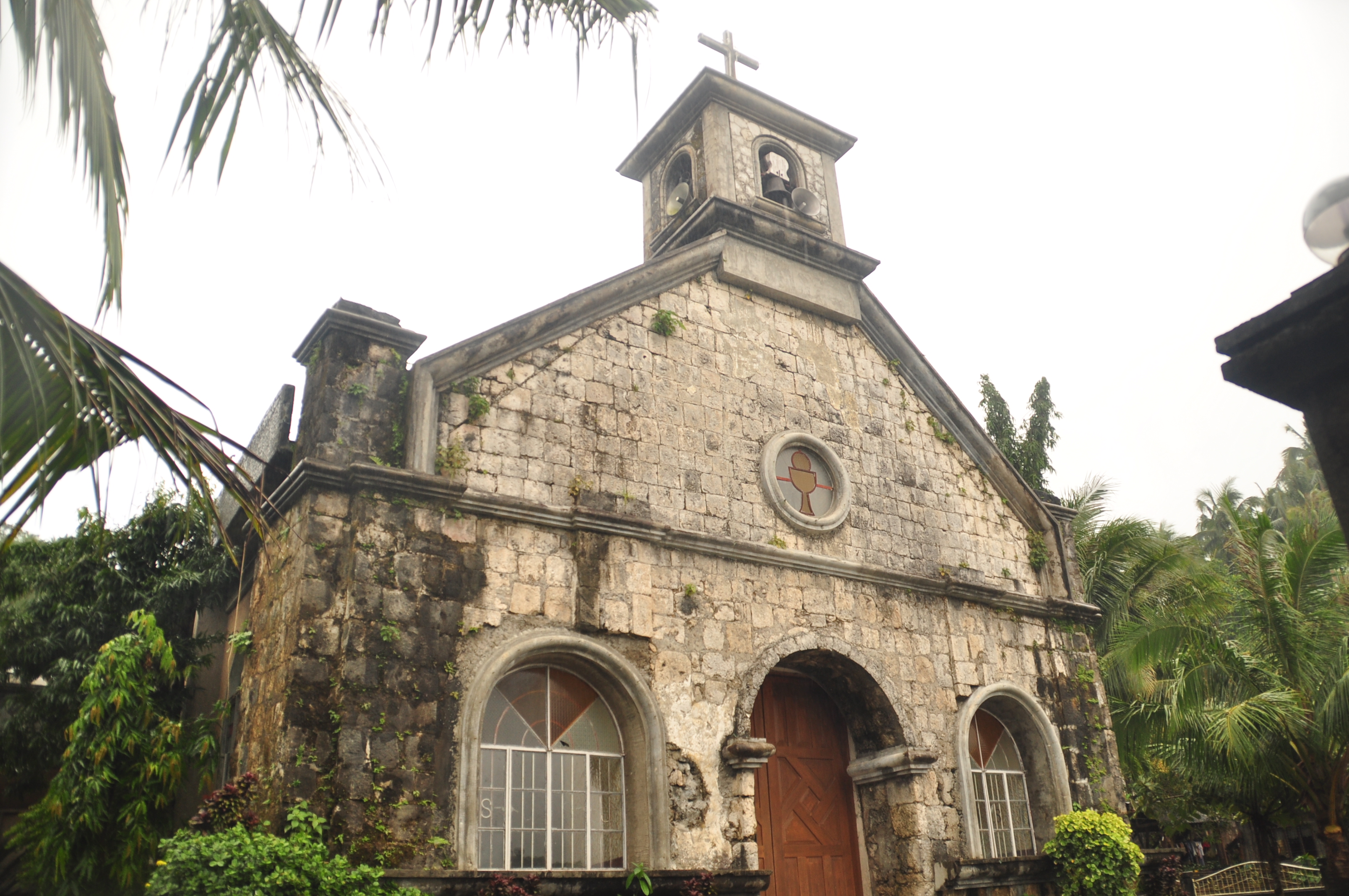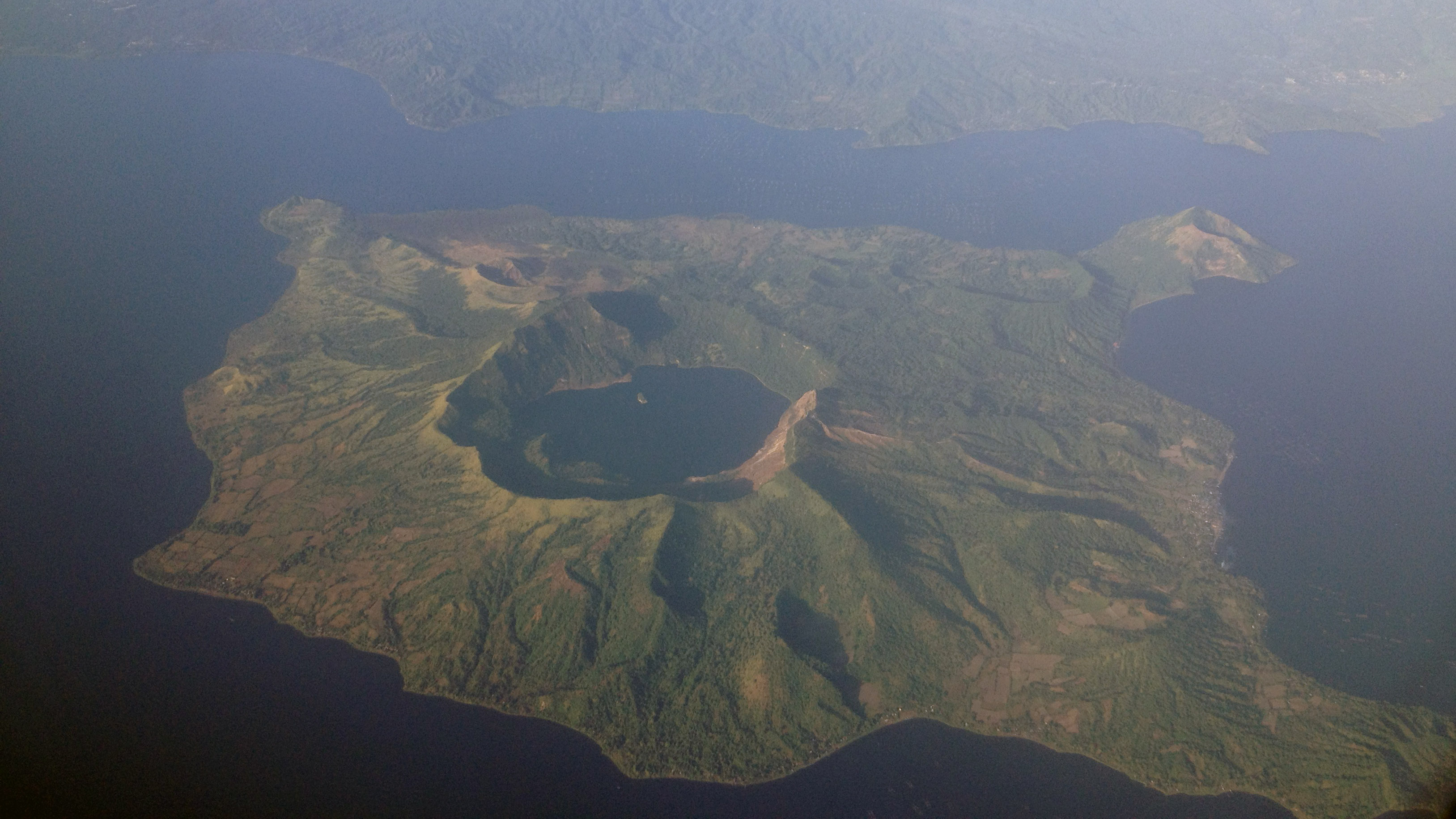|
N651 Highway (Philippines)
National Route 651 (N651) forms a part of the Philippine highway network. It is one of the national secondary roads with two non- contiguous sections, one which runs through the city of Carmona, Cavite in the Calabarzon region, while the other road runs within the island of Catanduanes in the Bicol Region. Route description Cavite N651 runs through the section of Governor's Drive in the city of Carmona, Cavite, where the road is also known as Carmona Diversion Road as it bypasses the city proper. Upon reaching the Carmona Rotonda, the rest of the road going to the province of Laguna is merged by N65. Catanduanes In the Catanduanes province, N651 runs through the municipalities of Panganiban and Caramoran Caramoran, officially the Municipality of Caramoran, is a 3rd class municipality in the province of Catanduanes, Philippines. According to the 2020 census, it has a population of 32,114 people. The main sources of livelihood of the town are gro ..., where the entire ... [...More Info...] [...Related Items...] OR: [Wikipedia] [Google] [Baidu] |
Department Of Public Works And Highways
The Department of Public Works and Highways ( fil, Kagawaran ng mga Pagawain at Lansangang Bayan}), abbreviated as DPWH, is the executive department of the Philippine government solely vested with the Mandate to “be the State's engineering and construction arm” and, as such, it is “tasked to carry out the policy” of the State to “maintain an engineering and construction arm and continuously develop its technology, for the purposes of ensuring the safety of all infrastructure facilities and securing for all public works and highways the highest efficiency and the most appropriate quality in construction” and shall be responsible for “(t)he planning, design, construction and maintenance of infrastructure facilities, especially national highways, flood control and water resources development systems, and other public works in accordance with national development objectives,” provided that, the exercise of which “shall be decentralized to the fullest extent feasib ... [...More Info...] [...Related Items...] OR: [Wikipedia] [Google] [Baidu] |
Governor's Drive
The Juanito R. Remulla Sr. Road, formerly and still commonly referred to as Governor's Drive, is a two-to-nine lane, network of primary, secondary and tertiary highways and bridges traversing through the central cities and municipalities of the province of Cavite, Philippines. It is the widest among the three major highways located in the province, the others being the Aguinaldo and Antero Soriano Highways. The road forms part of National Route 65 (N65), National Route 651 (N651), National Route 403 (N403), and National Route 405 (N405) of the Philippine highway network. History The origin of the highway could be traced back to three separate roads: ''Dasmariñas-Carmona-Biñang Road'' from Dasmariñas to Carmona, ''Naic-Quintana-Junction Dasmariñas-Silang'' from Naic to Dasmariñas, and an old provincial road linking the municipal centers of Naic, Maragondon, and Ternate. The first two were classified as secondary roads in the 1950s. The provincial road's segment from Na ... [...More Info...] [...Related Items...] OR: [Wikipedia] [Google] [Baidu] |
Carmona, Cavite
Carmona, officially the Municipality of Carmona ( tgl, Bayan ng Carmona), is a 1st class municipality located in the province of Cavite, Philippines. According to the 2020 census, it has a population of 106,256 people. Etymology When Silang became a town and Latag was annexed as a part of it since 1595. Latag gradually developed into a community whose residents struggled hard to make it a town. Their burning desires were filled with hopes and fulfillment in 1856 when their move for the conversion of Latag into a town was spearheaded by a leader named Tiburcio Purificacion. Finally, by virtue of a decree issued on February 20, 1857, by the King of Spain through Governor General Fernando de Norzagaray, Latag became a separate municipality with the name it bears today: Carmona, named after the town of Carmona in the province of Seville, Spain. Yet until now, it had not been known where the name originated. History Carmona was just a part of the big town of Silang. This is not ... [...More Info...] [...Related Items...] OR: [Wikipedia] [Google] [Baidu] |
Panganiban, Catanduanes
Panganiban, officially the Municipality of Panganiban, is a 5th class municipality in the province of Catanduanes, Philippines. According to the 2020 census, it has a population of 9,713 people. It is formerly known as Payo. Etymology Although the original name was Payo, this town has changed name from Panganiban to Payo and back again. During the last term of the late assemblyman Francisco Perfecto, Panganiban became Payo again on April 20, 1957, under Republic Act No. 1654. Congressman Jose M. Alberto (through Republic Act 2122 enacted without executive approval April 15, 1959) changed the name to Panganiban again by which it is officially known at present. Legend has it that a boatload of seafarers from some village in the south-eastern mainland of Luzon was shipwrecked onto the shore of what is now Panganiban. The village headman, or “Payo” as he was called by the villagers, was among the shipwrecked and no one was able to return to the home village. Migrating villagers ... [...More Info...] [...Related Items...] OR: [Wikipedia] [Google] [Baidu] |
Caramoran, Catanduanes
Caramoran, officially the Municipality of Caramoran, is a 3rd class municipality in the province of Catanduanes, Philippines. According to the 2020 census, it has a population of 32,114 people. The main sources of livelihood of the town are growing rice, coconuts, and lasa and fishing. The white beaches and clean sea water of Toytoy and Sabang, the water falls of Ab-haw, Awinis and Garagag are some of the attractions, and together with the Hilacan River, are the main source of water for irrigation. History The early Spanish missionaries who came to the Philippines landed in Napacahan, a sitio in Tubli and established a parish, which lasted for many years. In the parish church, St. John the Baptist had been venerated until this day as the Patron Saint (feast day June 24). Early Caramoran history disclosed the fact that the town originated in Napacahan, but due to relentless and repeated Muslim piracy in the 17th to the 18th century, the town was transferred to its present site ... [...More Info...] [...Related Items...] OR: [Wikipedia] [Google] [Baidu] |
Philippine Highway Network
The Philippine highway network is a network of national roads owned and maintained by the Department of Public Works and Highways (DPWH) and organized into three classifications according to their function or purpose: national primary, secondary, and tertiary roads. The national roads connecting major cities are numbered from N1 to N83. They are mostly single and dual carriageways linking two or more cities. As of October 15, 2019, it has a total length of of concrete roads, of asphalt roads, of gravel roads, and of earth roads, with a grand total of . According to a 2011 report from the Asian Development Bank, the extent of the road network in the Philippines is comparable with or better than many neighboring developing countries in Southeast Asia. However, in terms of the quality of the road system, i.e., the percentage of paved roads and the percentage of those in good or fair condition, the country lagged behind its neighbors . Classification The national roads in the ... [...More Info...] [...Related Items...] OR: [Wikipedia] [Google] [Baidu] |
Contiguous
Contiguity or contiguous may refer to: *Contiguous data storage, in computer science *Contiguity (probability theory) *Contiguity (psychology) *Contiguous distribution of species, in biogeography *Geographic contiguity of territorial land *Contiguous zone The term territorial waters is sometimes used informally to refer to any area of water over which a sovereign state has jurisdiction, including internal waters, the territorial sea, the contiguous zone, the exclusive economic zone, and potenti ... in territorial waters See also * * {{disambig ... [...More Info...] [...Related Items...] OR: [Wikipedia] [Google] [Baidu] |
Calabarzon
Calabarzon (), formally known as the Southern Tagalog Mainland, is an administrative region in the Philippines, designated as Region IV-A. The region comprises five provinces: Batangas, Cavite, Laguna, Quezon, and Rizal; and one highly urbanized city, Lucena. The region is the most populous region in the Philippines according to the Philippine Statistics Authority, having over 14.4 million inhabitants in 2020, and is also the country's second most densely populated after the National Capital Region. The region is situated southeast of Metro Manila, and is bordered by the Manila Bay to the west, Lamon Bay and the Bicol Region to the east, the Tayabas Bay and Sibuyan Sea to the south, and Central Luzon to the north. It is home to places like Mount Makiling near Los Baños, Laguna, and the Taal Volcano in Batangas. Prior to its creation as a region, Calabarzon, together with the Mimaropa region, the province of Aurora and several parts of Metro Manila, formed the historical ... [...More Info...] [...Related Items...] OR: [Wikipedia] [Google] [Baidu] |
Catanduanes
Catanduanes (; ), officially the Province of Catanduanes, is an island province located in the Bicol Region of Luzon in the Philippines. It is the 12th-largest island in the Philippines, and lies to the east of Camarines Sur, across Maqueda Channel. Its capital is Virac. It had a population of 271,879 people as of the 2020 census. The province comprises Catanduanes Island (also called ''Virac Island''), Panay Island, Lete Island, the Palumbanes group of islands (Porongpong, Tignob and Calabagio), and a few other small, surrounding islets and rocks. The province is also home to various mollusk fossil sites, notably the second-oldest ammonite site in the Philippines. These sites have certain species of ammonites that are found nowhere else in Southeast Asia. Because of the province's importance and rich geologic history, various scholars have suggested that, if the province would take the initiative to put its name forward in nomination, it would stand a good chance of being dec ... [...More Info...] [...Related Items...] OR: [Wikipedia] [Google] [Baidu] |
Bicol Region
Bicol, known formally as the Bicol Region or colloquially as Bicolandia ( bcl, Rehiyon kan Bikol; Rinconada Bikol: ''Rehiyon ka Bikol''; Waray Sorsogon, Masbateño: ''Rehiyon san Bikol''; tl, Rehiyon ng Bikol), is an administrative region of the Philippines, designated as Region V. Bicol comprises six provinces, four on the Bicol Peninsula mainland (the southeastern end of Luzon) – Albay, Camarines Norte, Camarines Sur, and Sorsogon – and the offshore island provinces of Catanduanes and Masbate. The regional center is Legazpi City and has one Independent Component City, the pilgrim city of Naga. The region is bounded by the Lamon Bay to the north, the Philippine Sea to the east, and the Sibuyan Sea and Ragay Gulf to the west. The northernmost provinces, Camarines Norte and Camarines Sur, are bordered to the west by the province of Quezon. Geography The Bicol Region comprises the southern part of Luzon, the largest island in the Philippine archipelago. The total land a ... [...More Info...] [...Related Items...] OR: [Wikipedia] [Google] [Baidu] |
Laguna (province)
Laguna, officially the Province of Laguna ( fil, Lalawigan ng Laguna), is a Provinces of the Philippines, province in the Philippines located in the Calabarzon Regions of the Philippines, region in Luzon. Its capital is Santa Cruz, Laguna, Santa Cruz while its largest city is the Calamba, Laguna, City of Calamba and the province is situated southeast of Metro Manila, south of the province of Rizal, west of Quezon, north of Batangas and east of Cavite. Laguna hugs the southern shores of Laguna de Bay, the largest lake in the country. As of the 2020 census, the province's total population is 3,382,193. It is the seventh richest province in the country. Laguna is notable as the birthplace of José Rizal, the country's ''de facto'' national hero. It has numerous natural and cultural attractions such as Pagsanjan Falls, the University of the Philippines Los Baños and the University of the Philippines Open University in Los Baños, Laguna, Los Baños, the hot spring resorts of Calamb ... [...More Info...] [...Related Items...] OR: [Wikipedia] [Google] [Baidu] |




